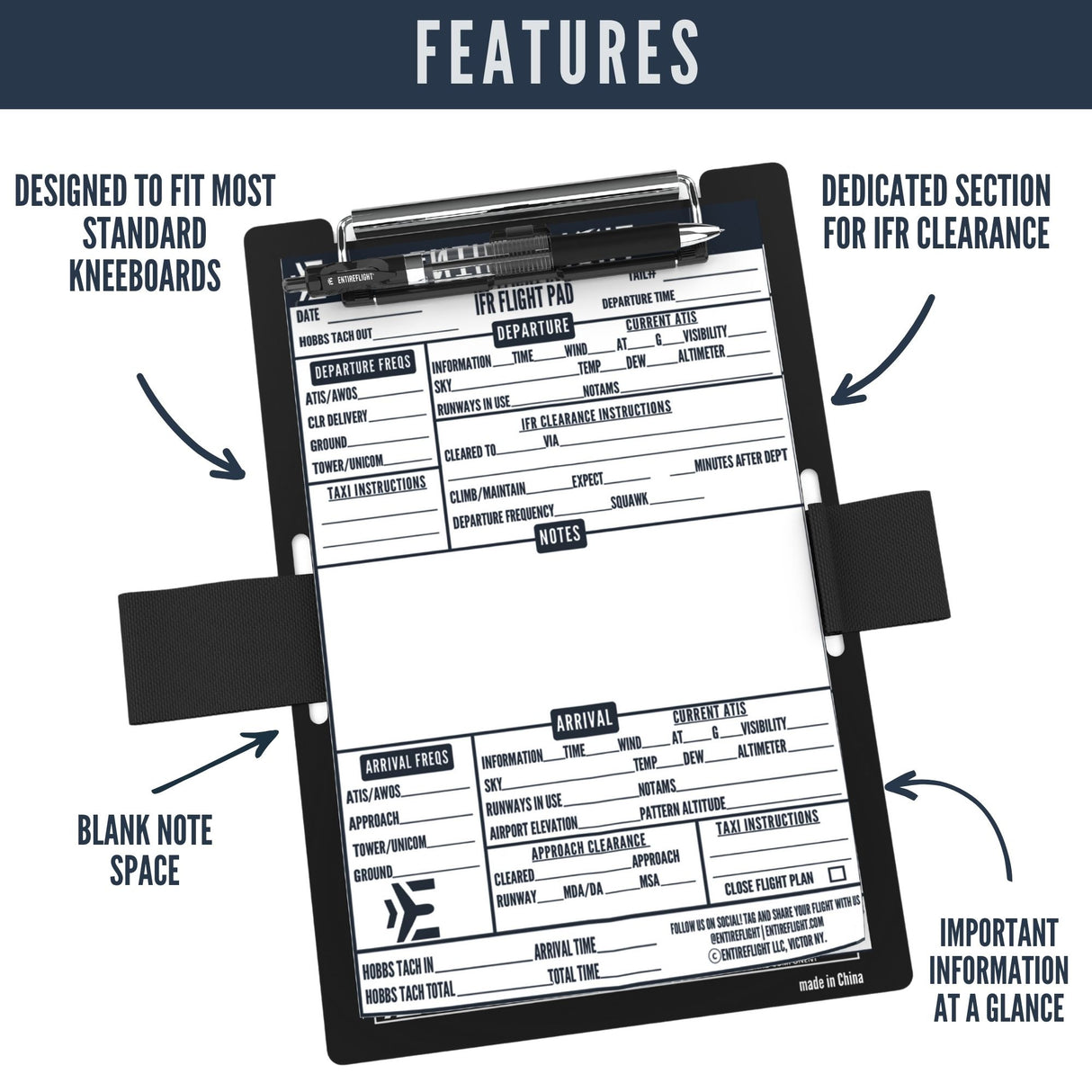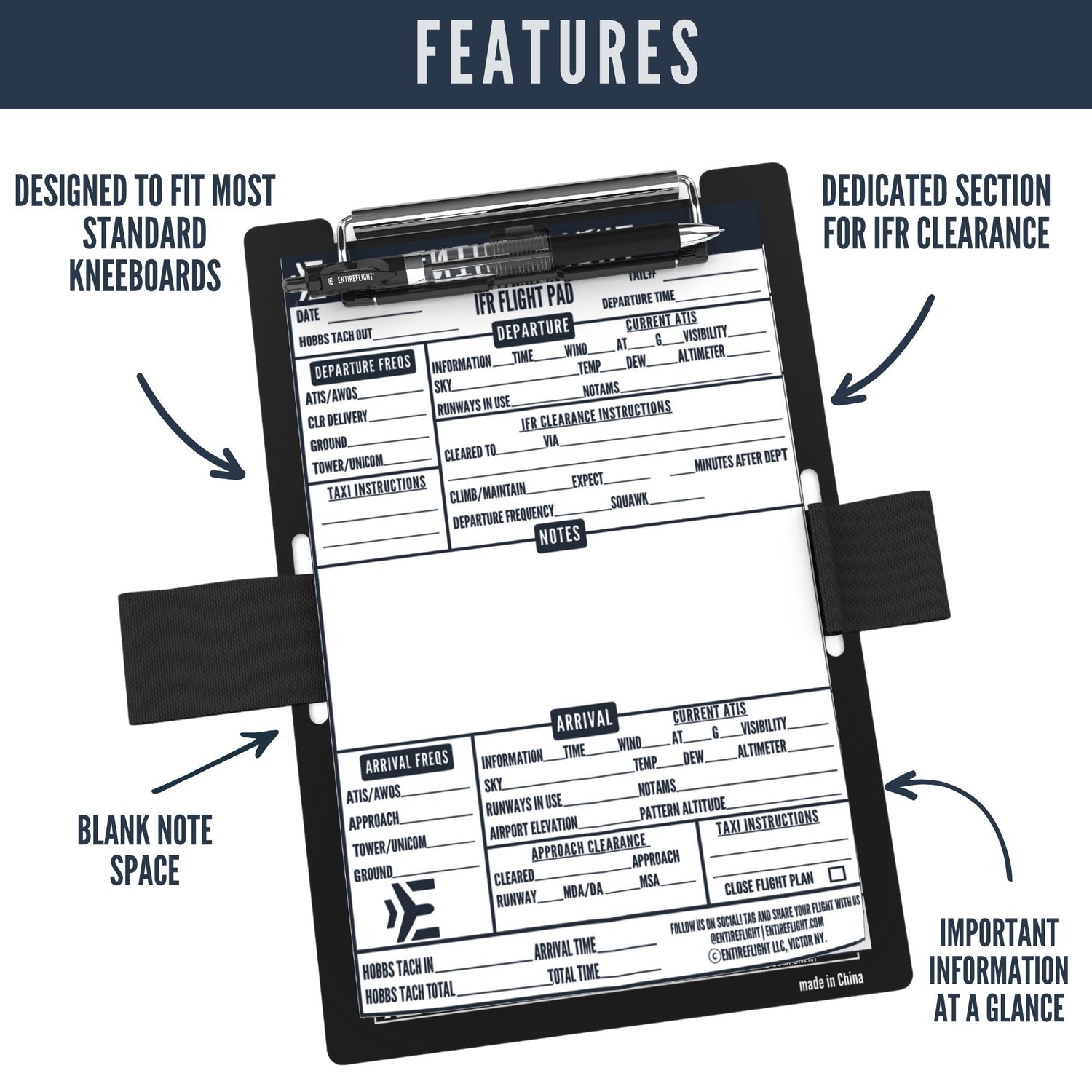How Does a Vertical Speed Indicator (VSI) Work?
Mastering your flight instruments, especially the Vertical Speed Indicator, is essential for smooth navigation in the skies. This crucial tool keeps you informed about your aircraft's climb, descent, or level flight in real-time.
In our guide we simplify this operation and its relationship with the pitot-static system. We'll help you interpret each reading accurately and empower you to upgrade your flight instrument knowledge. Let's embark on this journey to elevate your flying expertise!
Key Takeaways
- The Vertical Speed Indicator is a crucial instrument that provides live updates on an aircraft's rate of climb or descent. It works by measuring pressure changes through the pitot - static system and converting them into vertical speed readings.
- Changes in altitude and airspeed can affect the accuracy of the device, so it's important for pilots to maintain steady airspeed and regularly inspect and clean the pitot tube and static ports.
- Pitot - static failures, such as blockages in these ports, can impact the indications of cockpit instruments, including the vertical speed indicator. Regular maintenance is necessary to prevent blockages and ensure accurate readings from these instruments.
The Key to Gauging Vertical Airspeed for a Smoother Flight
In simple words - the Vertical Speed Indicator provides information about the rate of climb or descent of an aircraft.
Definition and purpose of a VSI
The Vertical Speed Indicator primarily detects aircraft climb, descent, or level flight. By measuring pressure changes via the pitot-static system and providing vertical speed readings, pilots gain valuable insights on their rate of climb or descent. This critical information ensures control and navigation during various flight phases, including ascents, descents, and cruising.
Mechanism of operation
This instrument measures rate-of-pressure changes in an aircraft, connected to the static air pressure system. It converts these changes into vertical speed readings, indicating climb, descent, or level flight. This instrument provides pilots with vital information for maintaining control and situational awareness during all flight phases.
Trend and rate information
By measuring pressure changes in the pitot-static system, the vertical speed indicator displays vertical speed results using a needle on a circular scale. Pilots depend on this crucial instrument to stay aware of their aircraft's vertical movement and make necessary adjustments during different flight phases.
Effects of altitude and airspeed changes
The Vertical Speed Indicator readings can be affected by altitude and airspeed changes. As you climb or descend, the instrument reacts to pressure variations. At higher altitudes, the relationship between pressure changes and vertical speed may be less accurate, so keep this in mind when relying on the VSI for climb or descent information.
Similarly, changes in airspeed can also impact accuracy. Maintaining a steady airspeed is essential for reliable vertical speed indications.
Pitot-Static Failures and their Impact on the VSI
Pitot-Static failures, such as blockages in the pitot tube and static ports, can have a significant impact on the indications of the Vertical Speed Indicator (VSI), airspeed indicator, and altimeter.
Understanding these failures is crucial for maintaining accurate and reliable flight information. Read more to learn about the effects of pitot-static failures on the VSI and why it's important to keep these ports clear.
Blockages in the pitot tube and static ports
It is important for pilots to be aware of potential blockages and take steps to prevent them from occurring. Here are some key points to keep in mind:
- Blockages in the pitot tube can disrupt the flow of air, resulting in inaccurate airspeed readings. This can directly affect the VSI, as it relies on accurate air pressure measurements for its operation.
- Blockages in the static ports can disrupt the measurement of atmospheric pressure, which is essential for determining altitude and vertical speed. Without accurate pressure readings, the VSI may not accurately depict climb or descent rates.
- It is important for pilots to regularly inspect and clean both the pitot tube and static ports to prevent blockages. This should be done as part of pre-flight checks to ensure accurate instrument readings.
- In cold weather conditions, ice formation on the pitot tube can also lead to blockages. Pilots should take precautions such as using anti-icing equipment or performing de-icing procedures before flight.
- If a blockage is suspected during flight, pilots should cross - check their instrument readings with other instruments, such as altitude indicators or GPS systems, to verify their vertical speed.
Effects on airspeed indication, VSI, and altimeter
The VSI is connected to the aircraft's static air pressure system. This means that any failures or blockages in the pitot-static system can affect the indications of the VSI, as well as the airspeed indicator and altimeter. It is important to keep the pitot tube and static ports clear to ensure accurate readings.
Importance of keeping ports clear
It is crucial for pilots to keep the ports clear on their aircraft. Air pressure measurements from the pitot-static system must be accurate to ensure reliable vertical speed indications. Any blockages or obstructions in the pitot tube or static ports can lead to incorrect readings and compromise the pilot's ability to maintain control of the aircraft during climbs, descents, and level flight.
Understanding the Indications
Interpret the indications of a VSI to determine if you are climbing, descending, or maintaining level flight.
Interpretation of climb, descent, and level flight indications
- Climb Indication: When the VSI needle is pointing upwards, it means the aircraft is climbing.
- Descent Indication: If the VSI needle points downwards, it indicates that the aircraft is descending.
- Level Flight Indication: When the VSI needle remains steady in the middle of the scale, it shows that the aircraft is in level flight.
- Climb and Descent Rates: A steeper climb or descent will result in a faster movement of the needle on the VSI.
- Rate Units: The vertical speed reading on a VSI is measured in feet per minute (ft/min).
- Accuracy Limitations: It's important to note that due to limitations at higher altitudes, the VSI may not provide completely accurate readings when climbing or descending rapidly.
- Monitoring Vertical Speed: Pilots must constantly monitor their vertical speed using the VSI to ensure safe and controlled changes in altitude.
- Adjusting Descent Rate: To control descent rate during approach and landing, pilots can adjust power settings, configure flaps and landing gear, and make pitch adjustments based on VSI indications.
Understanding the calibrated leak and pressure differentials
The Vertical Speed Indicator relies on the principle of pressure differentials to accurately measure the rate of climb or descent of an aircraft. It does this through a mechanism called a calibrated leak.
The calibrated leak is designed to allow air to slowly escape from the VSI case, creating a difference in pressure between the inside and outside of the instrument. This pressure differential causes the needle on the VSI to move and indicate whether you are climbing, descending, or in level flight.
By understanding how this calibrated leak works and its relationship with pressure changes, you can effectively interpret and rely on your VSI for accurate vertical speed information during your flights.
Vertical Speed Indicators vs. Instantaneous Vertical Speed Indicators
When it comes to monitoring the aircraft's rate of climb or descent, pilots have two main options: the traditional Vertical Speed Indicator (VSI) and the more advanced Instantaneous Vertical Speed Indicator. Each has its unique features and benefits, catering to different flying needs. Let's explore the differences between these two instruments:
| Feature | Vertical Speed Indicator (VSI) | Instantaneous Vertical Speed Indicator |
|---|---|---|
| Primary Function | Indicates average rate of climb or descent over a short period | Displays real-time vertical speed, capturing instantaneous changes |
| Operation Principle | Measures pressure changes to determine average rate of change in altitude | Utilizes advanced technology to provide immediate vertical speed readings |
| Response Time | Slower response, smoothing out variations and providing more stable readings | Immediate response, showing rapid changes in vertical speed |
| Usefulness during Manuevers | Helpful for steady climb or descent phases, making it easier to maintain desired altitude | Extremely valuable during dynamic maneuvers, providing instant feedback |
| Accuracy in Changing Conditions | Suitable for level flight and steady climbs or descents | Offers accuracy during rapidly changing altitude scenarios |
| Instrument Complexity | Simpler design, standard in most aircraft | Requires more advanced technology, less common in basic flight instruments |
| Pilot Experience | Suitable for pilots of all experience levels | More beneficial for experienced pilots or advanced training scenarios |
Understanding the Differences
The traditional Vertical Speed Indicator (VSI) remains a fundamental tool in aviation, offering pilots valuable information about the average rate of climb or descent over a short period. It smooths out variations, making it easier to maintain a steady altitude during level flight or predictable climbs and descents. The VSI is reliable and commonly found in various aircraft due to its simplicity and effectiveness.
On the other hand, the Instantaneous Vertical Speed Indicator, although less common, provides pilots with real-time vertical speed data, capturing immediate changes in the aircraft's altitude. This advanced technology is especially useful during dynamic flight maneuvers, such as rapid climbs or descents, where instant feedback is critical for maintaining precise control.
For pilots flying in changing atmospheric conditions or performing intricate maneuvers, the Instantaneous Vertical Speed Indicator proves highly valuable. However, it may not be as necessary for general flying operations or less experienced pilots.
Choosing the Right Instrument
The choice between the Vertical Speed Indicator and the Instantaneous Vertical Speed Indicator depends on your flying needs and level of experience. For most pilots, the traditional VSI is more than sufficient for safe and efficient flight operations. However, if you're engaging in advanced flight training or flying in situations that demand instantaneous altitude feedback, the Instantaneous Vertical Speed Indicator can be an excellent addition to your flight instruments. Ultimately, both instruments serve the same purpose of providing vital altitude information, and pilots should familiarize themselves with the operation and limitations of each to make informed decisions during their flights.How High Can You Go? Maintaining Vertical Airspeed Control At All Times
Grasping the workings of the Vertical Speed Indicator (VSI) is crucial for every pilot. This vital instrument offers essential data on the aircraft's rate of climb or descent, enabling pilots to maintain control and make informed decisions during flight.
Understanding the VSI's operation and being vigilant about potential pitot-static failures ensure the accuracy and reliability of this crucial tool. Keep your knowledge of the VSI sharp and stay in command of your vertical speed at all times!
FAQs
Q: How does a Vertical Speed Indicator (VSI) work?
A: The VSI measures the rate of change in altitude by sensing the difference in air pressure between the static air pressure and the atmospheric pressure as the aircraft climbs or descends. It displays this information as a vertical speed on a dial.
Q: What are some common uses of a Vertical Speed Indicator?
A: Pilots use the VSI to determine their rate of climb or descent during takeoff, landing, and level flight. It is also helpful for maintaining specific altitudes during instrument flight conditions.
Q: Can a Vertical Speed Indicator be used as an altitude indicator?
A: No, the VSI cannot be used as an altitude indicator because it only shows rate of climb or descent, not absolute altitude. Pilots must refer to other instruments like an altimeter to know their exact altitude.
Q: Are there any limitations to using a Vertical Speed Indicator?
A: Yes, there are limitations to using a VSI. Factors such as turbulence, changes in pitch attitude, and variations in atmospheric conditions can affect its accuracy and response time. Pilots should always cross-reference with other instruments for precise altitude information.
Q: What is the difference between a vertical speed indicator and an instantaneous vertical speed indicator?
A: The main difference between a vertical speed indicator (VSI) and an instantaneous vertical speed indicator lies in the type of information they provide. The VSI indicates the average rate of climb or descent over a short period, smoothing out variations for more stable readings. On the other hand, the instantaneous vertical speed indicator offers real-time vertical speed data, capturing immediate changes in the aircraft's altitude, making it valuable during dynamic flight maneuvers and rapidly changing altitude scenarios.






















